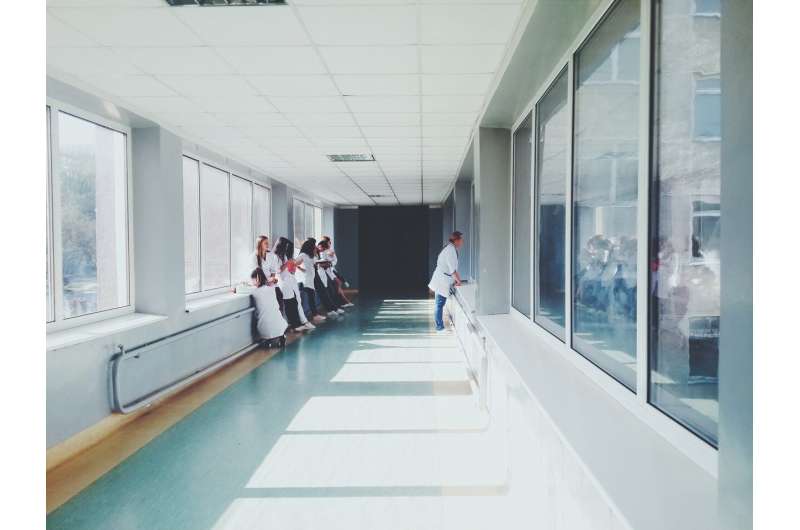This article has been reviewed according to Science X's editorial process and policies. Editors have highlighted the following attributes while ensuring the content's credibility:
fact-checked
trusted source
proofread
Children's hospital design impacts nurse, patient and family experience

Curtin University research has found that the design of Perth's new Children's Hospital in Western Australia had positive outcomes for privacy and natural light, but initially left nurses feeling exhausted, isolated and less visible to patients and their families.
The design strategies evaluated included that the new pediatric hospital incorporates mostly single patient rooms, a 65% larger floor area, V-shaped ward design and architectural features to maximize natural light, quietness and views of nature.
The research, published in the Journal of Health Services Research & Policy, employed a pre and post move design using health care improvement principles to measure the impact of the new physical environment on time spent by nurses providing patient care and patient, family and nurse experience.
Lead researcher Associate Professor Fenella Gill, from Curtin's School of Nursing, said the study found that while nurses spent double the amount of time walking in the new hospital, they spent the same amount of time at patients' bedsides.
"At the time of planning this study, the influence of building design with single rooms on patient, family and nurse experience and workflow in a children's hospital was unquantified. We looked to address that knowledge gap by measuring the effects from a nursing, patient and family point of view," Associate Professor Gill said.
"Our research revealed both benefits and challenges. Patients and families liked the new environment (in particular the natural light, privacy of single patient rooms and views), yet also recognized how the design resulted in reduced visibility of nurses and a sense of isolation.
"Nurses reported that the new environment resulted in them initially experiencing exhaustion; less visibility to families and other nurses; and decreased capacity to supervise less experienced nurses, but over time they did adjust to their new working environment and their experiences did improve."
The study found that while the experience of care reported by families increased after the move, children's experiences were unchanged.
Associate Professor Gill said despite the hard data of no change to nurse time spent at patients' bedsides, the perception and experiences of children, families and nurses were that nurses were less visible and spent less time with patients.
"Focus groups revealed nurses felt there was an insufficient number of nurses to provide patient care, and through surveys they also reported a large decrease in staffing and resource adequacy from 70.4% pre-move to 57.1% post-move," Associate Professor Gill said.
This study was conducted over three different time periods from November 2017 to September 2019. Study participants were inpatient children and families, and nurses employed at each of the previous and new pediatric hospitals at the time of data collection. Nurse participants included four categories; Enrolled Nurses, Registered Nurses, Clinical Nurses and Senior Registered Nurses.
More information: Fenella J Gill et al, A new children's hospital with a larger floor space, single rooms, and V-shaped ward design: A pre–post evaluation of nurse time providing patient care and nurse, patient, and family experiences, Journal of Health Services Research & Policy (2023). DOI: 10.1177/13558196221146658



















